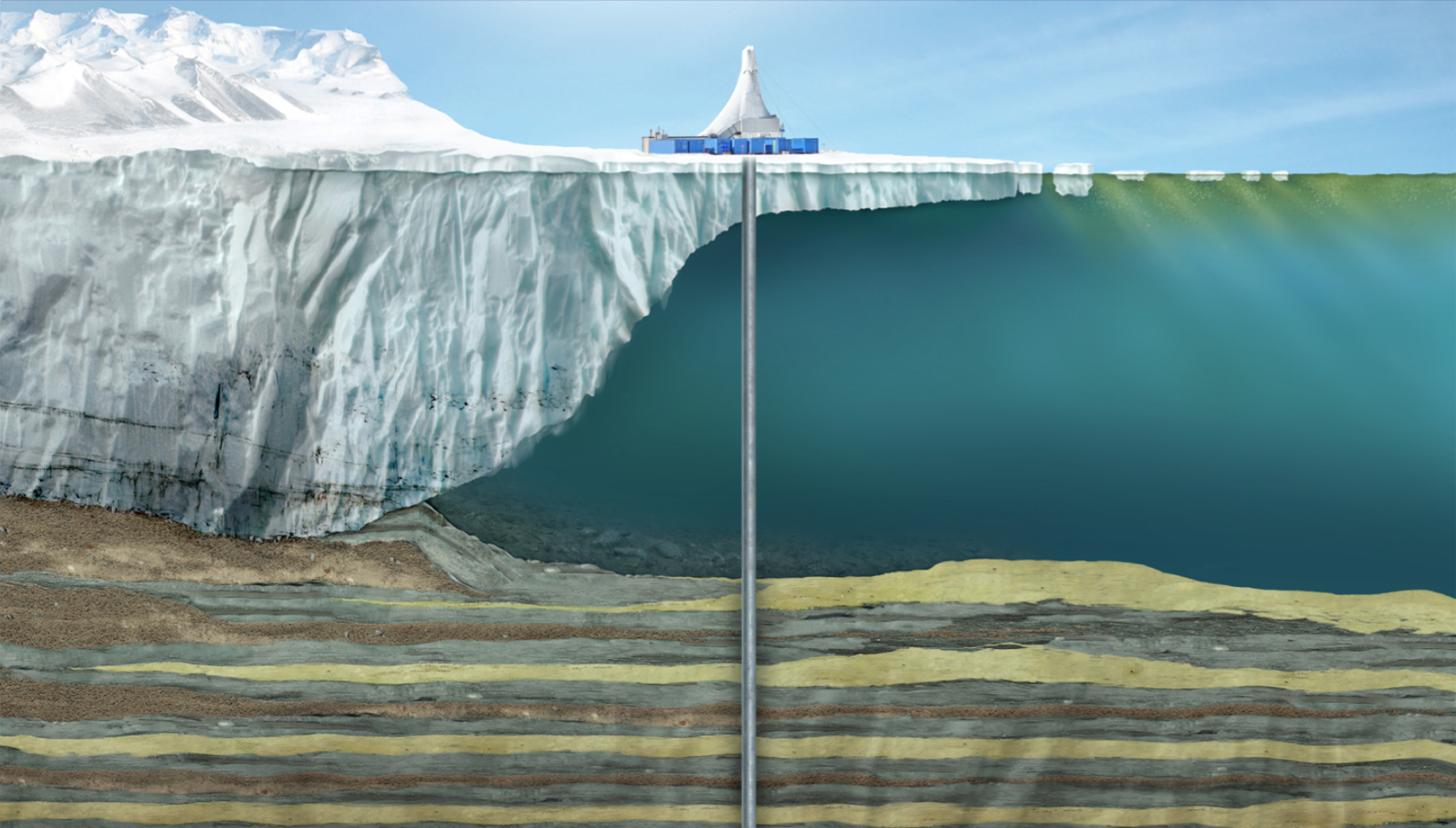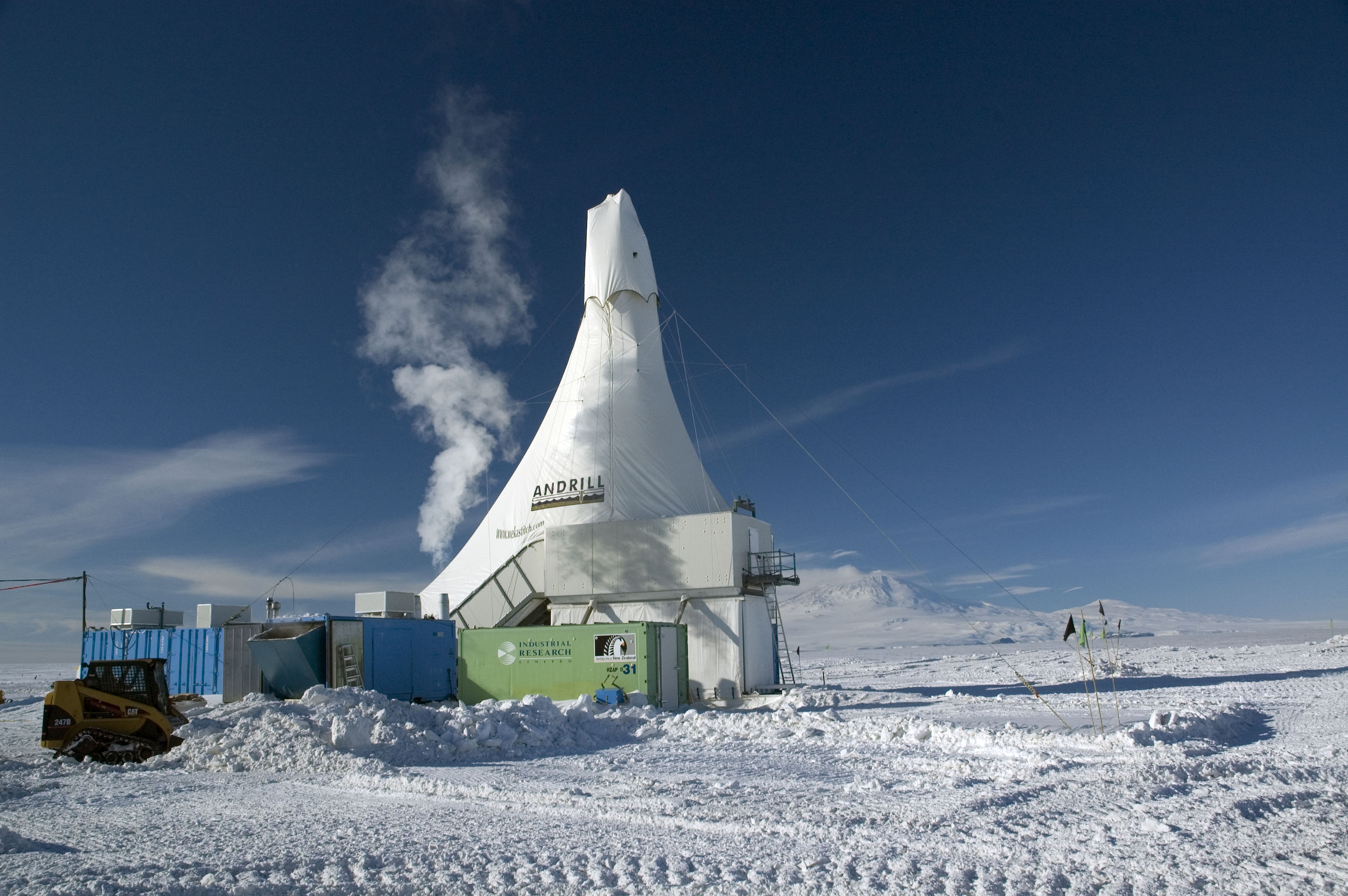
Levels of atmospheric carbon dioxide expected during the 21st century would equal those from a geologic era that saw contraction of the Antarctic Ice Sheet and a substantial rise in sea level, according to a new study co-authored by UNL researchers.
A new model reported in a companion study projects the sea level to rise approximately 100 feet if the current carbon dioxide level of 400 parts per million increases to 500 ppm, as predicted by the Intergovernmental Panel on Climate Change.
Published Feb. 22 in the journal Proceedings of the National Academy of Sciences, the joint studies stemmed from the efforts of the Antarctic Geological Drilling Program, or ANDRILL. Co-authors David Harwood, Christopher Fielding and their UNL colleagues coordinated the program’s research as part of ANDRILL’s Science Management Office.
ANDRILL scientists extracted and examined a 3,375-foot-long sample of rock from beneath Antarctica’s McMurdo Sound, giving the researchers access to layers of sediment deposited between 20 and 14 million years ago. Analyzing this rock record for numerous factors that included chemical signatures, sediment properties and changes in fossil types allowed the scientists to meticulously reconstruct many shifts in water temperature, ice coverage and sea level that occurred throughout the period.
During times when carbon dioxide concentrations reached 500 ppm, ice retreated at least 50 miles inward from the Antarctic coast as the Ross Sea warmed about 5 degrees Celsius above its current temperature, according to one study.
“These changes happened in the past; they’re going to happen again in the future,” said Harwood, the E.E. and T.M. Stout Professor of Stratigraphy at UNL. “The fact of carbon dioxide driving the warming of the oceans is just a fact of how the greenhouse gases work.”
Harwood said geological evidence suggests that the planet is already overdue for a 40-foot rise in sea level, based on the carbon dioxide increase from 280 to 400 ppm catalyzed by the Industrial Revolution. That shift occurred so rapidly by geologic standards that Earth’s ice sheets have yet to fully respond as they did in the past, he said.
The team’s findings also informed the development of a computer model that can simulate large-scale contractions of Antarctic ice, a feat that Harwood said previous models struggled to achieve. Both the core sample and the ice sheet-climate models demonstrated substantial changes in ice volume under only modest increases in carbon dioxide.
Though previous research has indicated the vulnerability of ice shelves and marine-based ice sheets, the new PNAS studies have shown that even land-based portions of the East Antarctic Ice Sheet were vulnerable to past warming similar to that projected over the next several decades.
“You’ve got to go back in time to make the models better at forecasting the future,” said Harwood, the research director of ANDRILL’s Science Management Office. “By testing and grounding our models on past warm periods, which we might see equivalents of in our near future, we can then understand how this might all play out. This work has allowed the models to mature to the point that they can understand the dynamics of an ice sheet in its many complexities and give a clearer view of the timing and magnitude of ice sheet changes.”
Though he cautioned that establishing a definitive timeframe for ice melt and sea level rise remains difficult, Harwood said the new model has called for the phenomena to occur at “alarming rates” that exceed prior projections.
“We’re talking about 2,000 to 3,000 years (to see a 100-foot rise), whereas previous models might have called for a slower rate of change,” he said. “The models give us important windows into the future. Taken together, the results from these two studies demonstrate that the Antarctic Ice Sheet can respond to elevated atmospheric carbon dioxide levels similar to those projected for the near future.”
UNL’s Brian Blackstone, Tracy Frank, Zi Gui, Laura Lacy, Joshua Reed and Eva Tuzzi also contributed to the PNAS study and ANDRILL research. Funded in part by the U.S. National Science Foundation and the Antarctic research programs of New Zealand, Italy and Germany, the ANDRILL Program involved more than 100 scientists.
The PNAS study “Antarctic Ice Sheet Sensitivity to Atmospheric CO2 Variations in the Early to Mid-Miocene” was authored by researchers from more than 20 institutions, led by Richard Levy of GNS Science in New Zealand. Levy was a staff scientist with ANDRILL’s Science Management Office at UNL when the core sample was drilled. The companion study, “Dynamic Antarctic Ice Sheet During the Early to Mid-Miocene,” was led by Edward Gasson from the University of Massachusetts Amherst.












